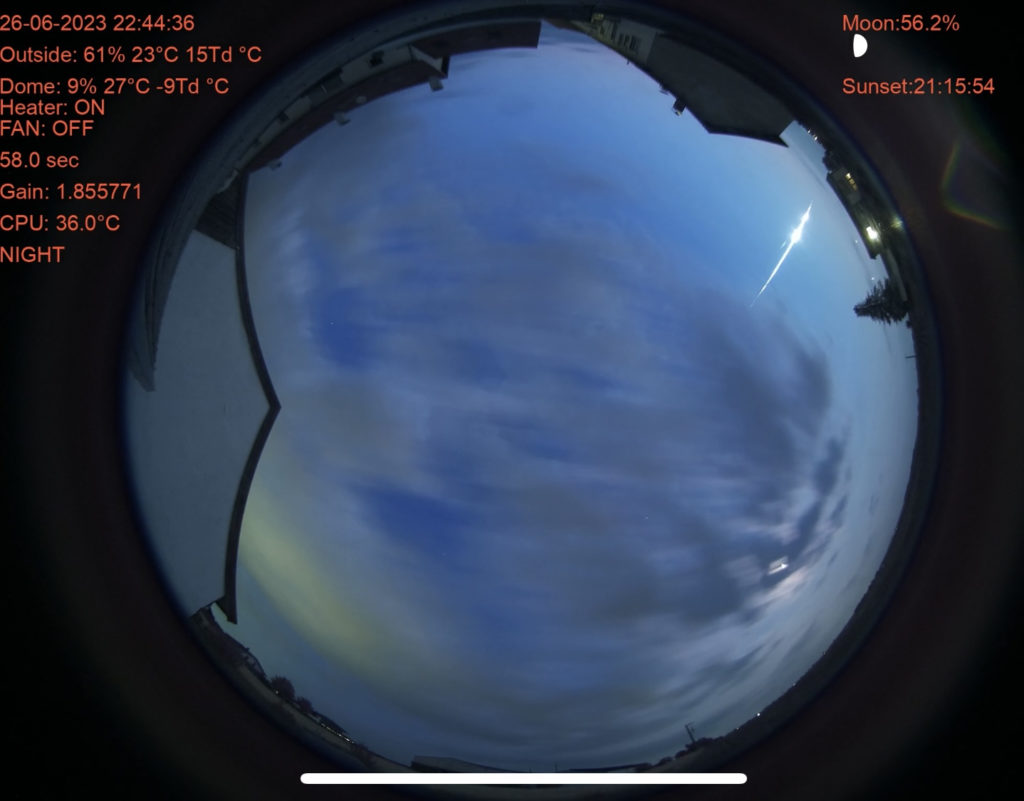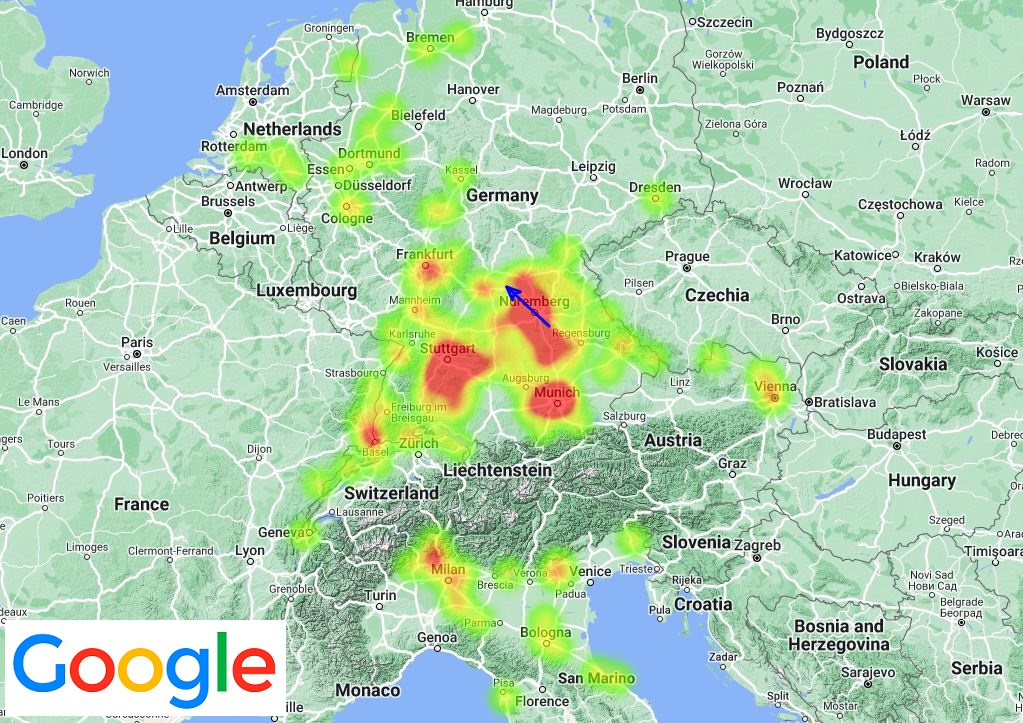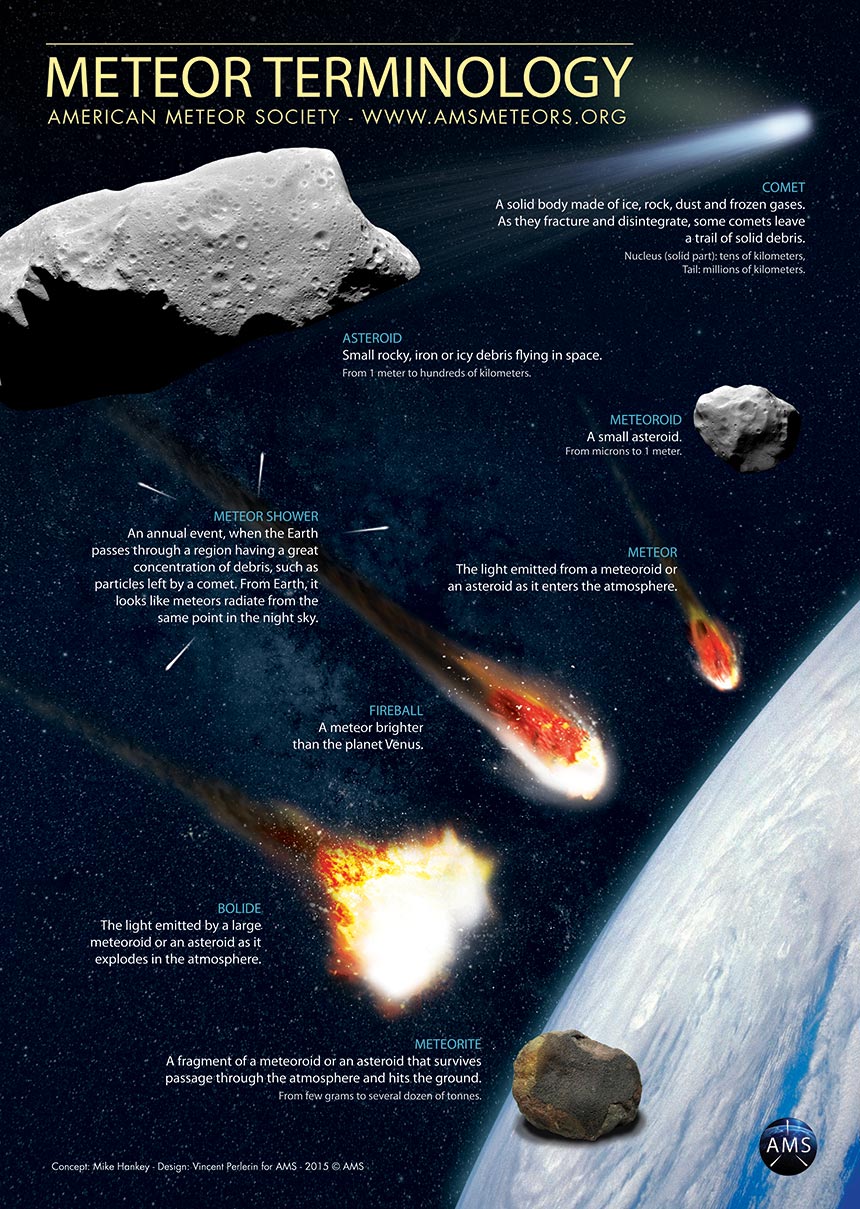On June 26, 2023, at 20h 45min UT (22h 45min CEST), a very bright fireball was witnessed by thousands of people, nearly 500 of whom sent a fireball report from Germany, France, Italy, the Netherlands, Switzerland, Belgium, Austria, Slovenia and Czech Republic (Figure 2). Event IMO #2023-3231 was also recorded on numerous videos and photographies (Figure 1 and below).

*CEST = Central European Summer Time
If you witnessed this event and/or if you have a video or a photo of this event, please
Submit an Official Fireball Report
If you want to learn more about Fireballs: read our Fireball FAQ.
A bright fireball reported by 500 people
The bright meteor observed on June 26th, 2023, 20h 45min UT (event #2023-3231) was widely observed over Western Europe, from Eastern France to Czech Republic, and from the Netherlands to Northern Italy (Figure 2).

It was also photographed by numerous people, and captured on videos, from which 17 of the AllSky7 network, giving a guess on the appearance of this dramatic fireball:
A fully Bavarian meteor
According to visual reports and videos, the medium-speed moving fireball lasted approximately 6 seconds, and displayed numerous outbursts and fragmentation, while changing colors (from red to green). Its path was all over Bavaria region, in Germany. It started being luminous while it was ~80 km above the ground, 20 km East of Roth, and it travelled 90 km in North-West direction (azimuth ~ 315°) with a ~25° inclination relative to horizontal. It passes over Nuremberg, and last sightings reported it as it was ~40 km high, above Geiselwind (Figure 2).
Fireball, Bolide?
Several thousand meteors of fireball magnitude occur in the Earth’s atmosphere each day. The vast majority of these, however, occur over the oceans and uninhabited regions, and a good many are masked by daylight. Those that occur at night also stand little chance of being detected due to the relatively low numbers of persons out to notice them.
Additionally, the brighter the fireball, the more rare is the event. As a general thumb rule, there are only about 1/3 as many fireballs present for each successively brighter magnitude class, following an exponential decrease. Experienced observers can expect to see only about one fireball of magnitude -6 (crescent moon) or better for every 200 hours of meteor observing, while a fireball of magnitude -4 (Venus) can be expected about once every 20 hours or so.





 You saw something bright and fast? Like a huge shooting star? Report it: it may be a fireball.
You saw something bright and fast? Like a huge shooting star? Report it: it may be a fireball.  You counted meteors last night? Share your results with us!
You counted meteors last night? Share your results with us!  You took a photo of a meteor or fireball? You have a screenshot of your cam? Share it with us!
You took a photo of a meteor or fireball? You have a screenshot of your cam? Share it with us!  You caught a meteor or fireball on video? Share your video with us!
You caught a meteor or fireball on video? Share your video with us!